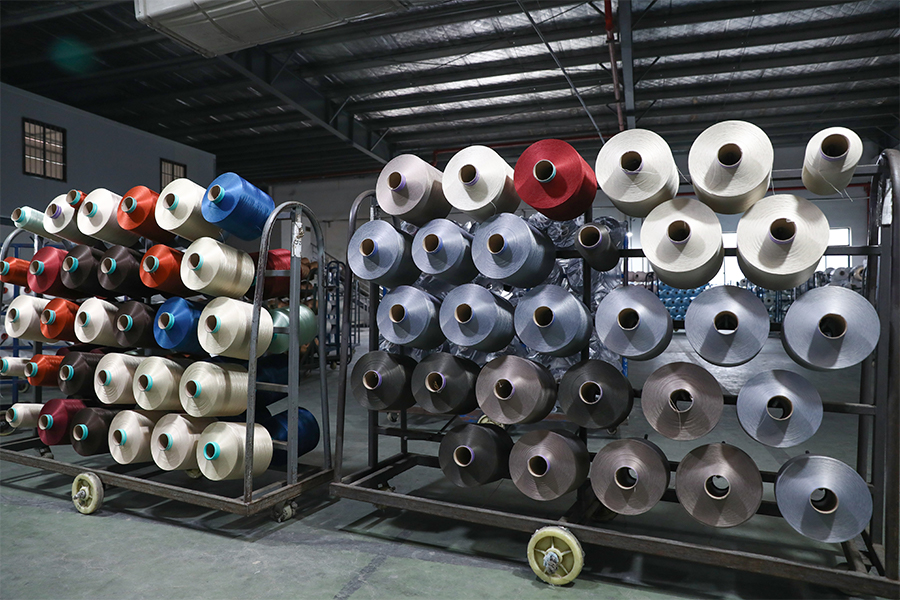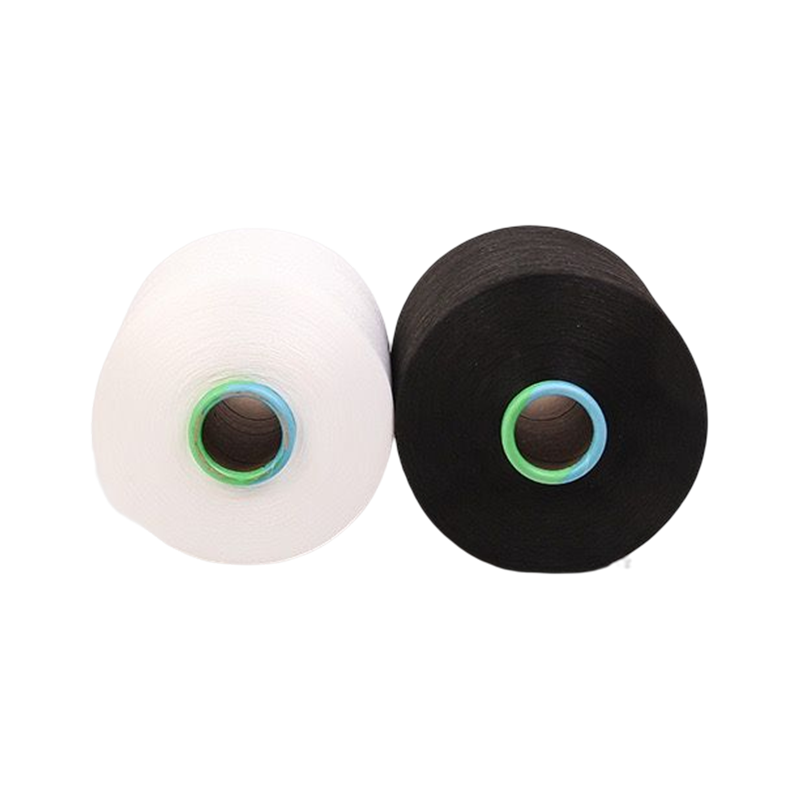- 1 Introduction
- 2 What is polyester DTY yarn?
- 3 Why choose polyester DTY yarn for different applications?
- 4 How to select the right polyester DTY yarn – specifications & comparison
- 5 Our company profile – Hengke Textile Technology Co., Ltd.
- 6 Summary & future outlook of polyester DTY yarn
- 7 FAQ
- 7.1 1. What is the difference between standard polyester filament yarn and polyester DTY yarn?
- 7.2 2. How do I choose between bright and semi‑dull finishes in semi dull polyester DTY yarn for home textiles?
- 7.3 3. What benefits do dope dyed polyester DTY yarn sustainable options offer?
- 7.4 4. When specifying recycled polyester DTY yarn eco friendly for manufacturing, what should I check?
- 7.5 5. For high‑speed weaving of sportswear fabrics, what specification of high tenacity polyester DTY yarn for weaving is recommended?
In today's rapidly evolving textile industry, choosing the right yarn can make a significant difference in quality, performance and sustainability. This guide dives deep into polyester DTY yarn, exploring its definition, advantages, application areas, specification criteria and how to select the best option. Our aim is to give you a professional and detailed reference that addresses real‑world needs of textile manufacturers, especially through the lens of our expertise at Hengke Textile Technology Co., Ltd.
Wash-resistant and wear-resistant polyester DTY yarn Yellow/Grey/White ZY0076-ZY0334 178
Introduction
Polyester DTY yarn — also known as draw‑textured yarn made from polyester filament — offers a unique combination of strength, versatility and comfort. As many brands and manufacturers push for fabrics that perform better, feel softer and deliver more durability, the role of high‑quality DTY polyester becomes central. At Hengke Textile Technology Co., Ltd., headquartered in Zhejiang, China and with a sister office in Jiangsu Province, we specialise in polyester yarn, nylon yarn, ACY yarn and related textile products. We handle multi‑million‑dollar business transparently, and our reputation has been built on production speed, quality practices and a holistic approach.
What is polyester DTY yarn?
Definition and production process
- Polyester DTY yarn is made by taking partially oriented polyester filament yarn (POY) and subjecting it to a drawing and texturing process (false‑twist or similar) to introduce crimps, loops or bulk, thereby converting straight filament into textured yarn.
- The process typically involves stretching (drawing) the filament to align molecular chains and then texturing (twisting + heat‑setting) to create elasticity, bulk and a more natural feel.
- This results in yarn which combines the durability of synthetic polyester with the comfort and bulk of texturized structure — a key reason why manufacturers turn to it.
Key performance characteristics
- Durability and abrasion resistance: The drawing process increases tenacity and reduces elongation, improving fabric strength.
- Elasticity and bulk: The texturing introduces crimps and loops, allowing the yarn to stretch, recover and provide a fuller hand‑feel.
- Soft hand and good drape: Unlike straight filament yarns, textured yarns like DTY offer more comfort and aesthetic appeal.
- Versatility of luster: Available in Semi‑Dull (SD), Bright (BR), Trilobal BR and other lusters, giving flexibility for different fabric appearances.
Why choose polyester DTY yarn for different applications?
Apparel and activewear – focusing on high tenacity polyester DTY yarn for weaving
For high‑performance garments such as sportswear, outerwear or fashion knitwear, selecting a DTY yarn with high tenacity is essential. The yarn must support weaving or knitting at high speed, maintain dimensional stability and provide elasticity for comfort. At Hengke Textile Technology Co., Ltd., our emphasis on production speed and quality practices makes us well‑positioned to supply high tenacity DTY options.
Home textiles – focusing on semi dull polyester DTY yarn for home textiles
In home textiles — curtains, upholstery, bedding — aesthetics and durability matter. A semi‑dull finish offers a more subdued, elegant look compared to bright luster, while the textured nature of DTY provides bulk and resilience. Choosing a semi‑dull polyester DTY yarn helps achieve the right balance of style and function.
Sustainable/eco‑friendly options – addressing dope dyed polyester DTY yarn sustainable & recycled polyester DTY yarn eco friendly
Sustainability is no longer optional. Many buyers now seek yarns that reduce water usage, chemical impact and carbon footprint. Dope‑dyed DTY yarns (where colour is integrated into the melt) and recycled‑polyester DTY yarns (using rPET) are prominent. At Hengke Textile Technology Co., Ltd., we actively promote such yarns to support environmentally responsible manufacturing.
How to select the right polyester DTY yarn – specifications & comparison
Key specification metrics (denier, filament count, luster) – referencing polyester DTY yarn specification denier filament
- Denier/filament (D/F): e.g., 75/36, 150/48 etc — influences fabric weight, drape and feel.
- Luster: Semi‑Dull (SD), Bright (BR), Trilobal BR — impacts visual appearance and light reflectivity.
- Intermingling level: NIM (non‑intermingled), SIM (slight intermingled), HIM (high intermingled) — affects yarn performance in weaving/knitting.
- Tenacity, elongation, shrinkage: critical for durability and dimensional stability.
Specification comparison table
| Specification | Standard Value A (apparel) | Standard Value B (home textiles) |
| Denier/Filament | 75/36, 100/48 | 150/48, 200/96 |
| Luster | Bright (BR) | Semi‑Dull (SD) |
| Intermingling | SIM / HIM | NIM / SIM |
| Tenacity (g/d) | ≥4.0 g/d | ≥3.5 g/d |
| Elongation at break | 15‑30 % | 20‑35 % |
Our company profile – Hengke Textile Technology Co., Ltd.
Founded by Mr. Daniel Wang, Hengke Textile Technology Co., Ltd. is one of the most important and leading exporters, headquartered in Zhejiang, China. The company was started with the main aim of becoming a renowned player in the field of stamping and exporting. We have established a strong reputation due to our production speed, quality practices and holistic approach. We also maintain a sister office in Jiangsu Province, another large textile centre in China now. We handle multi‑million‑dollar businesses in the most transparent manner. We specialise in the marketing of various textile products such as polyester yarn, nylon yarn, ACY yarn and almost all textile‑related products.
Summary & future outlook of polyester DTY yarn
In summary, polyester DTY yarn blends the durability and ease‑care of polyester with the texture, bulk and comfort of texturised structure. Whether you select a high tenacity variant for apparel, a semi‑dull finish for home textiles, or eco‑friendly recycled/dope dyed options for green manufacturing, the key is matching specification to end‑use. Looking ahead, sustainability, functional innovation and supply chain transparency will continue to shape the market for DTY yarns — and with our expertise and infrastructure, Hengke Textile Technology Co., Ltd. is committed to being your trusted partner.

FAQ
1. What is the difference between standard polyester filament yarn and polyester DTY yarn?
The main difference is that standard filament yarn (such as FDY) is straight and un‑texturized, whereas polyester DTY yarn has been drawn and texturized — introducing crimps, bulk and elasticity. This gives DTY better comfort and bulk while maintaining polyester's strength.
2. How do I choose between bright and semi‑dull finishes in semi dull polyester DTY yarn for home textiles?
A bright finish reflects more light and gives a glossier look; a semi‑dull finish offers a more subdued, elegant appearance better suited for home furnishings like curtains and upholstery. You should also consider fabric drape, texture and ambient lighting when choosing.
3. What benefits do dope dyed polyester DTY yarn sustainable options offer?
Dope dyed options integrate colour at the melt stage, reducing water usage, improving colour fastness and minimising environmental impact compared to conventional dyeing. This supports sustainability and cost efficiency.
4. When specifying recycled polyester DTY yarn eco friendly for manufacturing, what should I check?
Ensure the yarn uses certified recycled polyester (e.g., rPET), verify mechanical performance (tenacity, elongation), confirm compatibility with the end‑use (woven, knitted, home textile), and review the supplier's sustainable credentials and traceability.
5. For high‑speed weaving of sportswear fabrics, what specification of high tenacity polyester DTY yarn for weaving is recommended?
For high‑speed weaving you typically need DTY yarn with higher tenacity (e.g., ≥4.0 g/d), good evenness, stable intermingling (SIM or HIM) and suitable denier/filament such as 100/48 or 150/48 to ensure minimal breakage and stable process.

 English
English
 Español
Español


-2.png)

-2.png)
-2.png)
-3.png)
